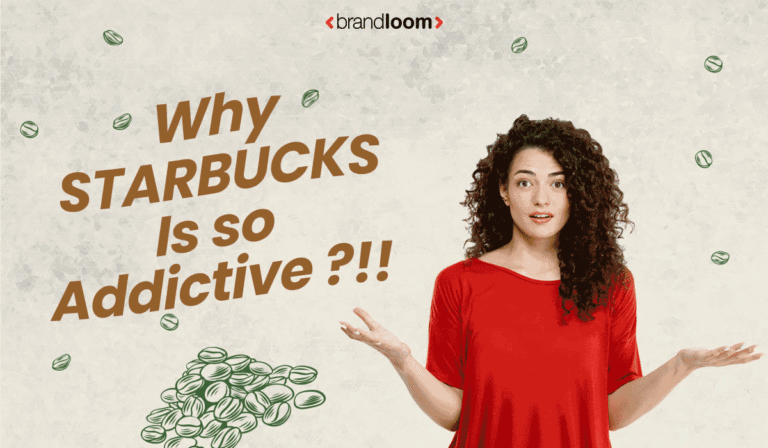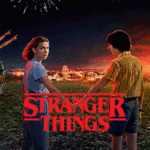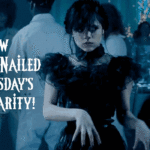Hey ,
In Today’s Email:
🧲 Why STARBUCKS Is So Addictive : & How You Can Do It Too!
🟨 ‘No Name’ Brand & Their DISRUPTIVE Marketing : Don’t Overcomplicate It!
📺 Branding MASTERCLASS : 3 Lessons In Branding From F.R.I.E.N.D.S!
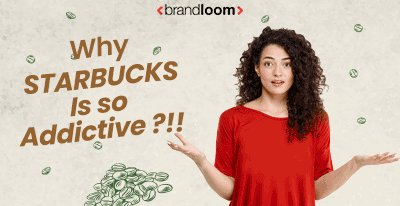
🧲 Why STARBUCKS Is So Addictive : & How You Can Do It Too!
What if your customers can’t stop buying your products?
Of course you need a great product to start with, but there’s more. You need behavioral marketing to make buying irresistible for your customers.
Take Starbucks, for instance.
Starbucks uses a combination of personalized rewards, mobile ordering, & social proof to keep customers coming back to their stores. 🏆
The Starbucks’ rewards program is designed to incentivize customers to make repeat purchases by offering them personalized rewards such as free drinks, food items, and merchandise.
The more a customer visits Starbucks and makes purchases, the more rewards they earn, which encourages them to continue patronizing the store. ☕💯
That is behavioral marketing in action! And you & I both have experienced it in person at one time or another.
So how can you use it for your business? Well, you need to know about –
‘The Hook Model’.
The Hook Model is a framework for making products habit-forming by creating a cycle of triggers, actions, variable rewards, and investments.
The model consists of four stages, which are:
1. Trigger
The first stage is the trigger, which is the moment when a user becomes aware of your product. It is the cue that causes an individual to act. 👌
Triggers can be internal & external. But you & I can control only external triggers such as a commercial, an email, or a publicized recommendation, which can light an internal desire for our products. 🏹
For example, Starbucks uses a variety of triggers to encourage customers to visit their stores, such as advertising, social media, and email marketing which could trigger the customer to visit the store.
2. Action
The second stage is – action, which the user takes in response to our trigger. The expected action should be frictionless, easy to complete and provide immediate gratification to the user. 🥰
Starbucks makes it easy for its customers to take action by providing a variety of ordering options, such as in-store ordering, mobile ordering, and home-delivery service. This convenience factor makes it easy for customers to place an order or visit the store.
3. Variable Reward
The third stage is – variable reward, which is the positive reinforcement that the user receives for taking the action. The reward should be unpredictable and create a desire for more. 😍
For instance the Starbucks’ rewards program 🥇 is designed to provide customers with variable rewards, such as free drinks, food items, and merchandise, which helps incentivize repeat visits & purchases.
Additionally, Starbucks’ seasonals & limited-time offerings also create a sense of excitement & anticipation among customers, which also serve as variable rewards.
4. Investment
The fourth stage is – investment, which is the user’s commitment to your product. The investment could be time, money, or effort, and it indicates that the user will return to your product in the future. 🙌
By using The Hook Model like Starbucks, Spotify, Amazon and other big businesses, you can also increase user engagement and create a strong user habit around your products and services.
To Implement the Hook Model Get in touch with us! ⤵︎
https://www.brandloom.com/digital-marketing-services
🟨 ‘No Name’ Brand & Their Disruptive Marketing :
Don’t Over-complicate It!
Have you ever heard of the famous “no name” brand in Canada?
The no name brand is a “no frills, no-nonsense” supermarket brand that has avoided fancy branding trends. Instead, it uses a simple packing with a lowercase Helvetica caption over a yellow background.
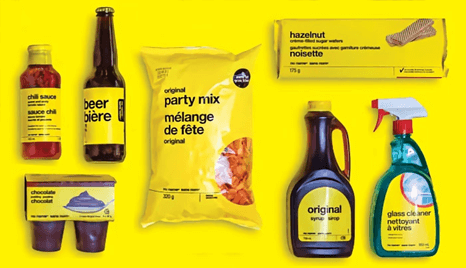
The no name brand was originally launched as a response to rising food prices in Canada in 1978. The idea was to provide affordable, high-quality products without the added costs of fancy branding and packaging.
Ironically, despite being known for its minimalist approach, the ‘no name’ brand actually has a trademarked name and logo!
Discover the unconventional marketing techniques of ‘No Name’ brand that became a canadian icon –
Lesson 1: Separation
Most brands try to outperform each other by doing something that resembles other brands. However, in the case of no name, they took the road less traveled and stripped off the fancy branding. This separation helped them to stand out from the competition.😎
Lesson 2: Limitation
No name’s approach to marketing is singular. Their marketing approach was straightforward and authentic, they didn’t try to do a lot of different things. Instead, they stood for something daring and simple. As such, they rejected superficiality. ✏️
Lesson 3: Consistency
After a brand has figured out what they want to stand for, they will need consistency to imprint their brand onto their audience’s mind. No name used consistent aesthetics and messaging, allowing them to stay a strong player for a long time. ♻️
Does that sound hard for you?
You can always unload the heavy work to the experts!⤵︎ 😎
https://www.brandloom.com/strategic-branding/consultants
Fun Fact About Us
82% of BrandLoom clients see an uptick of at least 20% in their revenue after the implementation of BrandLoom’s strategies
📺 Branding MASTERCLASS : 3 Lessons In Branding From F.R.I.E.N.D.S!
Since the show aired for the first time, F.R.I.E.N.D.S has captivated minds and hearts for generations. This classic comedy show has never failed to hit the mark. 😀
Let’s take a look at the 3 viral marketing lessons you can learn from the Emmy-winning television show:
1. Develop Your Brand Persona
F.R.I.E.N.D.S is a great example of a TV show with a clear brand persona. The show’s characters, humor, and style of storytelling all contributed to its distinctive brand identity.
From Rachel’s fashion sense to Joey’s love for food, each character has a unique identity that is consistent throughout all the 10 seasons.
Moreover, F.R.I.E.N.D.S has a consistent tone and style that creates a cohesive brand identity. It is known for its characters’ quirks, witty humor, relatable storylines, and upbeat music. These characteristics create a distinct brand persona for the show that is instantly recognizable to its audience. 👩🏻 👩
Similarly, we can develop your brand persona by establishing your unique value proposition, messaging, and visual style. 👀
2. Leverage Social Proof Like a Pro
Friends leveraged social proof in various ways throughout all seasons.
One notable example is the show’s use of celebrity guest appearances. By featuring well-known actors and musicians as guest stars, Friends was able to create buzz and generate interest among their fan base.
The show also received critical acclaim and numerous awards, which further increased its social proof. 📣
In marketing, businesses can leverage social proof through customer testimonials, reviews, and influencer partnerships generating credibility and trust. 🤝
3. Create Memorable Experiences
F.R.I.E.N.D.S has provided us with many examples of how to create memorable experiences for customers.
One example is Central Perk, the iconic coffee shop where the characters often hung out. The cozy atmosphere, the live music, and the coffee all made it a go-to spot for the characters and contributed to creating a unique and memorable experience for the audience. 🛋️☕️🪴
The show also had memorable catchphrases and inside jokes that became a part of popular culture. “How you doin’?”, “We were on a break!”, and “PIVOT!” all helped connect with the audience.
Finally, the show’s merchandise, such as t-shirts, mugs, and posters, allowed fans to take a piece of the show home with them. This created a sense of ownership and attachment to the show, and it contributed to the show’s continued success even after it ended. 😍
In marketing, it’s essential to create experiences that stand out and leave a lasting impression on your audience. By doing so, you can create a strong emotional connection with your customers and foster brand loyalty.
Let’s discuss branding
https://www.brandloom.com
That’s it for today, thanks for reading.
Yours Sincerely,

Avinash Chandra
Founder,BrandLoom
☎︎ +91-7669647020
✉️ care@brandloom.com
Note: If you want to discuss strategy, just hit reply on this mail.

